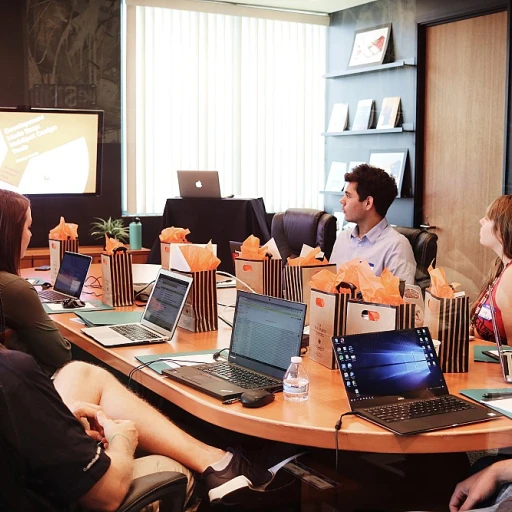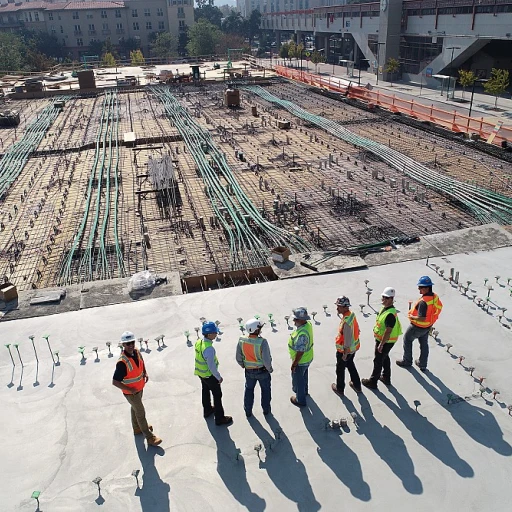
Understanding the Importance of Career Development
Recognizing the Significance of Career Advancement Initiatives
In today's rapidly evolving business landscape, career development programs have become central to organizational success. These initiatives not only drive professional growth but also play a crucial role in boosting employee engagement and retention.
One of the key factors in sustaining a competitive edge within any industry is an organization's ability to help employees enhance their skills and adapt to changes. This is where learning opportunities, tailored to meet employee's career goals, come into play. Employers who provide a strategic framework for employee career progression demonstrate a commitment to their workforce's long term success.
A well-designed development plan takes into account the aspirations and potential career paths of team members. Through training and mentorship programs, companies can foster an environment of growth opportunities that resonate with their personnel's personal and professional goals.
Incorporating these elements into a company's DNA not only assures employee job satisfaction but also supports organizational growth. For more on the broader implications, consider reading on the benefits of understanding a disability buy-out policy as part of comprehensive benefits planning.
Identifying Employee Needs and Goals
Establishing a Framework for Employee Development
Identifying the unique needs and goals of employees is a fundamental step in crafting an effective career development program. Organizations must prioritize understanding what drives their employees' career progression and professional growth. By doing so, companies can better align their development plan with individual aspirations and company objectives.
One of the key elements in this process is communication. Regular interactions with team members can reveal their career paths and help build a robust framework for their development. Employees should feel encouraged to express their career goals and skills they wish to acquire, allowing the organization to tailor development programs that cater to those needs.
Incorporating assessment tools can be beneficial as well. Utilizing surveys, interviews, and performance data helps in recognizing the skills, strengths, and areas for improvement for each employee. Gathering this information provides the foundation for creating personalized development plans that resonate with the employees' career goals.
Additionally, providing employees with opportunities for feedback allows for a more interactive development environment. Open discussions about job satisfaction and growth opportunities are integral in refining development programs to better support professional development.
Linking identified needs and goals with a structured plan ensures employees are not only equipped for their current roles but are also prepared for future job challenges and growth within the company. Organizations can then offer targeted training development and support through mentorship opportunities, helping employees fill any gaps in skills and navigate their career paths effectively.
For further insights on aligning employee goals with compensation and benefits, you might consider exploring a detailed analysis, such as the one on HR Connect. Understanding these connections can enhance the overall effectiveness of career development initiatives.
Designing a Comprehensive Program Structure
Creating a Structured Blueprint for Growth
To design a comprehensive structure for career development programs, organizations should start by establishing a clear progression framework. This serves as a foundational step in assisting employees in visualizing their potential career paths and identifying the necessary skills and training for their job and professional growth. A well-defined framework aligns the company's business objectives with its employees' personal career goals, harmonizing both long-term aspirations. A key component of a structured framework is incorporating various growth opportunities that capitalize on employee strengths while addressing their areas for improvement. This might include offering a diverse array of training development resources, such as workshops, online courses, or self-paced learning modules, which can be tailored to individual employee needs.- Identify Skill Gaps: Map out current employee skills and juxtapose them with the desired competencies for future roles within the company. This helps identify areas where training development initiatives can fill the gaps and promote continuous learning and skill enhancement.
- Offer Diverse Learning Opportunities: Consider introducing cross-departmental exchanges, collaborative projects, or mentorship arrangements to broaden employees' professional experiences. Such initiatives encourage professional development and contribute to a dynamic learning environment.
- Set Clear Achievable Goals: Incorporate specific, measurable, attainable, relevant, and time-bound (SMART) objectives into individual development plans. Goal-setting ensures employees are focused on their career progression while also contributing significantly to the organization.
Implementing Effective Training and Mentorship
Empowering Employee Growth through Training
The success of career development programs lies significantly in the ability to implement effective training and mentorship systems. With the right training development opportunities, organizations can help employees acquire relevant skills and knowledge that align with their career goals and the company's strategic objectives. This aspect of employee development is vital in fostering long-term professional growth and ensuring career progression. To achieve this, your company should focus on creating a framework that accommodates diverse learning styles. Consider developing a variety of training modules that cater to different career paths within your organization.- Workshops and Seminars: These offer hands-on experiences and practical learning opportunities that can fill skill gaps and aid in professional progression.
- Online Courses and E-Learning: Ideal for self-paced learning, online options provide flexibility and access to a broader range of resources.
- On-the-Job Training: Practical experience through real world tasks enhances job readiness and understanding.
- Peer Learning and Team Workshops: Encouraging collaboration among team members fosters an environment of shared knowledge and continuous learning.
Leveraging Mentorship for Professional Development
Alongside training, mentorship is a powerful tool in career development programs, offering employees personalized guidance. Establishing a mentorship plan that pairs seasoned professionals with those seeking growth can facilitate skill transfer and provide insights into potential career paths. To ensure the effectiveness of mentorship programs:- Identify suitable mentors and mentees based on their skills, experience, and career aspirations.
- Set clear objectives for both parties, focusing on skills and competencies to be developed.
- Regular check-ins to monitor progress and make necessary adjustments to the development plan.
- Feedback mechanisms to help mentors and mentees assess milestones and refine goals.
Evaluating Program Success and Making Adjustments
Measuring Success Through Outcomes
Evaluating the success of a career development program is a multi-faceted endeavor. Start by identifying key performance indicators that align with the organization's strategic goals and employee growth objectives. This will help clarify whether the programs are meeting the intended career progression and skill development targets. Consider incorporating both quantitative and qualitative metrics to gauge outcomes. Quantitative data may include the number of employees promoted, increased retention rates, or improved employee satisfaction scores. Qualitative evaluations could involve feedback from employees about their learning experiences, perceived opportunities for growth, and overall professional development.Engagement and Feedback Mechanisms
Feedback is crucial for identifying areas of improvement in development programs. Encouraging open communication channels within the organization, such as surveys or suggestion boxes, can provide valuable insights into employee satisfaction and areas needing adjustment. Regular feedback from employee participants can also help in understanding if the training development and mentorship initiatives are effectively contributing to their professional growth. This will ensure that the programs are not only helping employees meet their career goals but also fulfilling organizational objectives.Adapting the Development Programs
Based on the evaluations, it’s important to be flexible and make necessary adjustments to the development plans. This might involve refining training methods, introducing new learning modules, or restructuring mentorship frameworks. Adapting to the changing needs of team members and aligning them with the evolving company strategies will ensure the relevance and effectiveness of the career development initiatives and provide employees with continuous growth opportunities.Integrating Compensation and Benefits with Development Programs
Aligning Compensation and Growth Opportunities
Ensuring that compensation and benefits are intertwined with career development is paramount for a company's success. This synergy not only aids in motivating employees but also aligns organizational goals with individual aspirations. By directly linking compensation to career progression, companies create a framework where employee development is recognized and rewarded.- Incentivize Achievements: Employees who engage actively in career development programs are often looking for growth opportunities. Acknowledging their efforts through salary increments or bonuses tied to achieving career goals reinforces the value of continuous learning.
- Skills-Driven Pay Scales: Adopting a competency-based pay structure can help organizations tailor compensation to fit the skills and professional growth exhibited by employees. This could lead to a more transparent and motivating progression framework.
- Employee Engagement through Benefits: Offering benefits such as funded training, tuition reimbursement, and mentorship programs not only supports professional growth but also underscores a long-term commitment to an employee's development plan.












